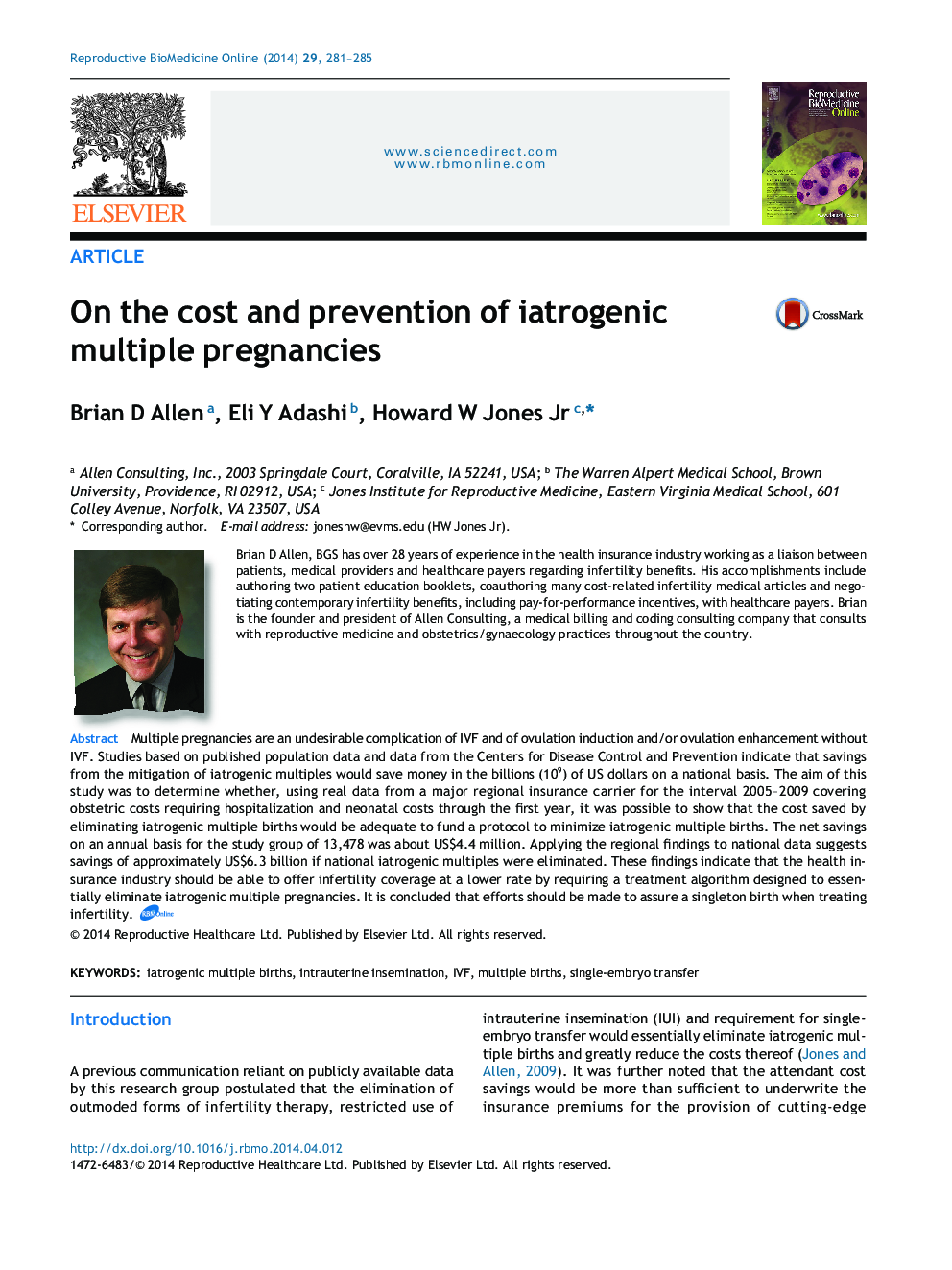| Article ID | Journal | Published Year | Pages | File Type |
|---|---|---|---|---|
| 3970116 | Reproductive BioMedicine Online | 2014 | 5 Pages |
Multiple pregnancies are an undesirable complication of IVF and of ovulation induction and/or ovulation enhancement without IVF. Studies based on published population data and data from the Centers for Disease Control and Prevention indicate that savings from the mitigation of iatrogenic multiples would save money in the billions (109) of US dollars on a national basis. The aim of this study was to determine whether, using real data from a major regional insurance carrier for the interval 2005–2009 covering obstetric costs requiring hospitalization and neonatal costs through the first year, it was possible to show that the cost saved by eliminating iatrogenic multiple births would be adequate to fund a protocol to minimize iatrogenic multiple births. The net savings on an annual basis for the study group of 13,478 was about US$4.4 million. Applying the regional findings to national data suggests savings of approximately US$6.3 billion if national iatrogenic multiples were eliminated. These findings indicate that the health insurance industry should be able to offer infertility coverage at a lower rate by requiring a treatment algorithm designed to essentially eliminate iatrogenic multiple pregnancies. It is concluded that efforts should be made to assure a singleton birth when treating infertility.
